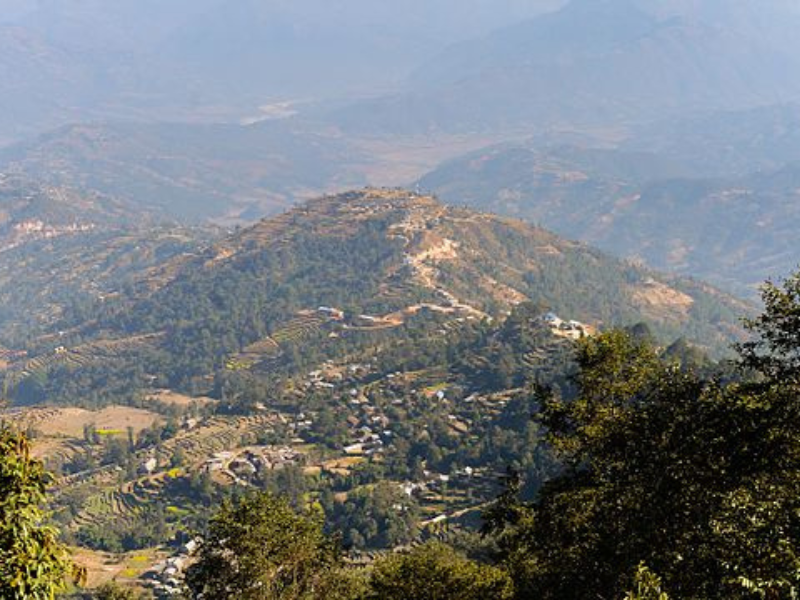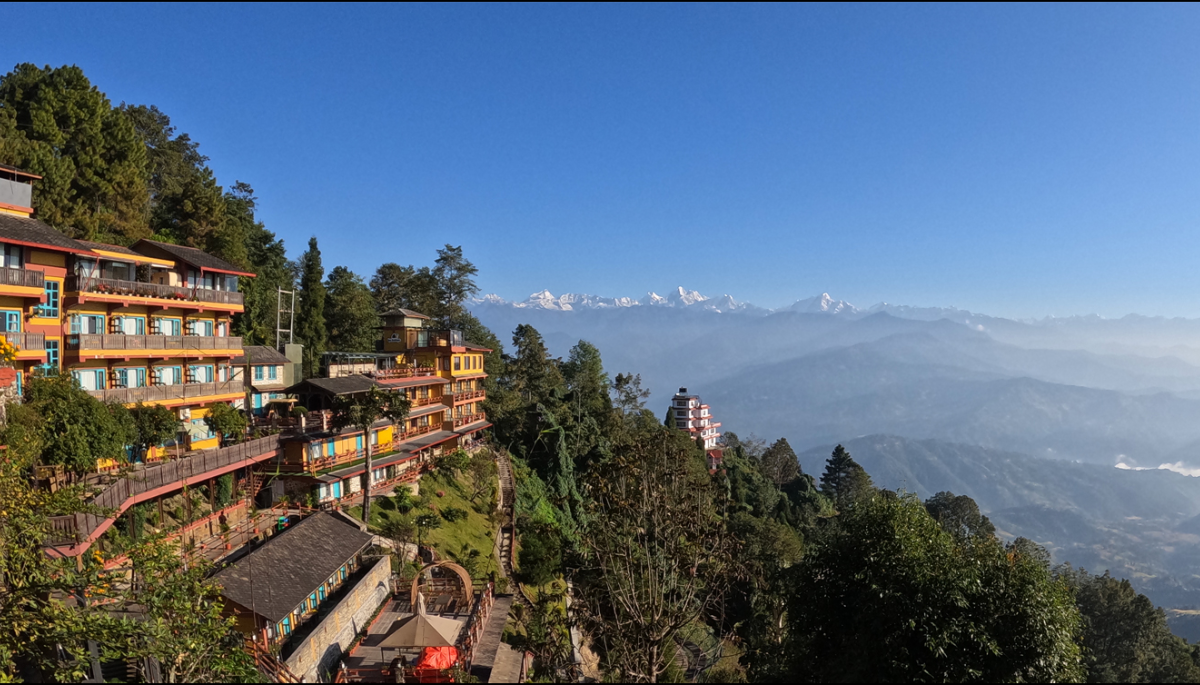Introduction
Nagarkot is a popular tourist attraction near Kathmandu, 25 km from the capital. It is an amazing sunrise viewpoint at 2100 meters above sea level, and it attracts many tourists on a regular basis. Nagarkot makes for a perfect weekend getaway spot where you can enjoy the area’s serene and beautiful atmosphere. Nagarkot also has numerous hotels and lodges that provide comfortable stays and excellent service.
Hiking to Nagarkot has been popular for the past few years. This short hike starts in Sankhu, an ancient Newari town in the Shankharapur municipality in Kathmandu district. It offers breathtaking panoramic views of the Himalayas. In this article, let’s take a closer look at this amazing day hike.
Reaching Nagarkot
There are several alternatives you can choose to get to Nagarkot. Here are a few of them:
- By Car/Taxi: One of the most convenient ways to get to Nagarkot is by car. The excellent road facilities up to Nagarkot make this journey relatively easy and quick.
- By Bus: You can also board a bus from Bhaktapur’s Sallaghari, which leaves at short intervals. The bus ride can be a bit bumpy and longer in comparison.
- By Bike: For people seeking adventure, you can also choose to ride a bike to Nagarkot. The road conditions have improved significantly over the past few years, making the ride fairly easy, too.
- By Hiking: One of the popular choices in the past few years has been hiking. The short yet challenging trail to Nagarkot leaves hikers with stunning mountain scenery and beautiful trails. Youngsters mostly prefer hiking.
Hiking Route Overview
Here is a quick summary of the hiking route to Nagarkot:
- Starting Point, Sankhu: Sankhu is an ancient Newari town that dates back to 532 A.D. There are many local myths and legends related to this small town. To get to Sankhu, you must ride 15-20 minutes from Boudhha. From Sankhu, you can start to ascend towards Nagarkot.
- Trail Highlights:
- Tall Green Hills: Along the way to Nagarkot, you will walk along tall green hills. The trail meanders through different landscapes. You will encounter many waterfalls, streams, small rivers, and caves along the way to Nagarkot.
- Terraced Fields: The scenic countryside terrain of Sankhu and Nagarkot features many terraced farmlands. During this hike, you may see people busy with their daily lifestyles, such as farming.
- Local Villages: This region, on the outskirts of Kathmandu, has numerous villages, mostly inhabited by Newars. You can explore one of these villages and learn about their culture and traditions.
- Final Ascent to Nagarkot: From Sankhu, you need to walk for 4-5 hours to reach Nagarkot. The final ascent is pretty challenging, with steep climbs.

Detailed Hiking Experience To Nagarkot
- Trail Conditions: The trail to Nagarkot is in good condition all year except for the monsoon season. So, you can expect beautiful trails with blooming flowers.
- Scenic Views: The trail offers amazing mountain scenery, including glimpses of Langtang, Jugal, and Ganesh Himal.
- Flora and Fauna: During this hike, you may encounter some rare wild animals and witness different species of plants.
- Rest Stops: There are plenty of stops along the way to Nagarkot. You can take rest stops at one of the waterfalls or at a river bank.
- Challenges: This hike is moderately challenging because you will gain 850 meters of altitude.
Key Things To Remember
This beautiful hike is a new addition to the hiking destination around Kathmandu, so the trail may not be well-marked. Be careful, as you may stroll outside the trail at times. You will not need many stuffs for this hike, so carry minimal things.
Conclusion
This hike offers a peaceful nature retreat. This can be your next destination if you seek a tranquil retreat near Kathmandu. From the trail, you will witness amazing mountain scenery. After walking for 4-5 hours, you will reach Nagarkot, a famous tourist destination with amazing sunrise views.
Frequently Asked Questions (FAQs)
1. How long does the Nagarkot hike take?
The hike from Sankhu to Nagarkot typically takes 4 to 6 hours, depending on your pace and the number of stops you make.
2. What is the best time of year to hike to Nagarkot?
The best time to hike to Nagarkot is during the dry seasons, from October to December and March to May. During these months, the weather is usually straightforward, and the best views of the Himalayas are offered.
3. Is the Nagarkot hike suitable for beginners?
Yes, the Nagarkot hike is considered moderate and suitable for beginners in good physical condition. The trail is well-marked, but it does have some steep sections.
4. Are there accommodations in Nagarkot?
Yes, Nagarkot has a range of accommodations, from budget guesthouses to more luxurious resorts. Booking in advance is a good idea, especially during peak seasons.
5. Is it safe to hike alone to Nagarkot?
While it is generally safe to hike alone, it is always recommended to do so with a partner or group, especially if you are unfamiliar with the area. If you hike alone, inform someone about your plans and expected return time.
READ MORE: Ranikot Hike from Bhaktapur: Scenic adventure guide


0 Comment